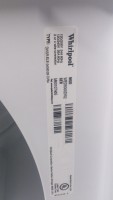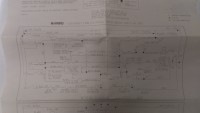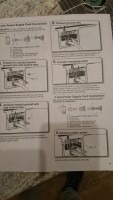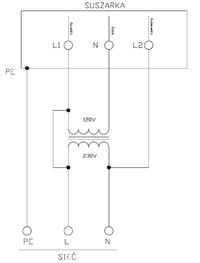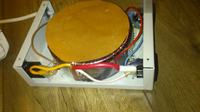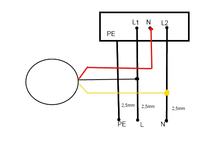Hello,
A friend brought a brand new Whirlpool clothes dryer from the USA. model WED5000DW2, dedicated to those voltages.
Connection types according to the nameplate. 3 wire and 4 wire POWER SUPPLY.
The original cables are not there (someone disassembled it before me), I managed to find a diagram of the device and one page of the manual. Unfortunately, I don't think I know exactly what it is like with these tensions in the USA. Is the standard connection of such devices with a 2-phase voltage 120V + grounded neutral? (3wire) and 2phase + N + PE (4wire)?
In this topic https://www.elektroda.pl/rtvforum/topic1653522.html#8017571
describe "There are no two phase home installations in America. It is a single phase installation with a middle ground connection." And here I have a spouse.
Is it possible to connect the above dryer without changing the whole thing?
A 230V-110V 5kw transformer is available.
Someone in front of me connected so that spinning the drum and control worked (the entire programmer and other wonders are mechanical so they do not mind changing the frequency) unfortunately, when the equipment comes to heating, it is silent, so I understand that it lacks phase-to-phase voltage (diagram)?
In the building, the closest force is 2 floors up, so bad. And 2 transformers would have to work.
I attach a plate, a diagram for this device, a manual page and a socket in the dryer (currently there are remains of something that you should not suggest). The socket has a neutral white connected to the housing.
A friend brought a brand new Whirlpool clothes dryer from the USA. model WED5000DW2, dedicated to those voltages.
Connection types according to the nameplate. 3 wire and 4 wire POWER SUPPLY.
The original cables are not there (someone disassembled it before me), I managed to find a diagram of the device and one page of the manual. Unfortunately, I don't think I know exactly what it is like with these tensions in the USA. Is the standard connection of such devices with a 2-phase voltage 120V + grounded neutral? (3wire) and 2phase + N + PE (4wire)?
In this topic https://www.elektroda.pl/rtvforum/topic1653522.html#8017571
describe "There are no two phase home installations in America. It is a single phase installation with a middle ground connection." And here I have a spouse.
Is it possible to connect the above dryer without changing the whole thing?
A 230V-110V 5kw transformer is available.
Someone in front of me connected so that spinning the drum and control worked (the entire programmer and other wonders are mechanical so they do not mind changing the frequency) unfortunately, when the equipment comes to heating, it is silent, so I understand that it lacks phase-to-phase voltage (diagram)?
In the building, the closest force is 2 floors up, so bad. And 2 transformers would have to work.
I attach a plate, a diagram for this device, a manual page and a socket in the dryer (currently there are remains of something that you should not suggest). The socket has a neutral white connected to the housing.



